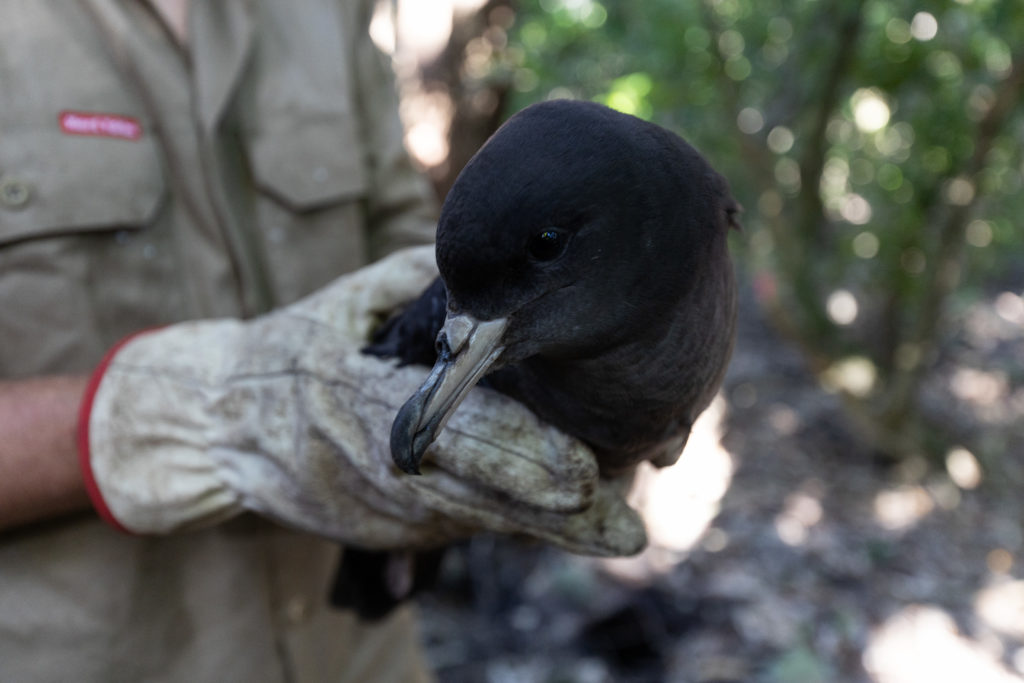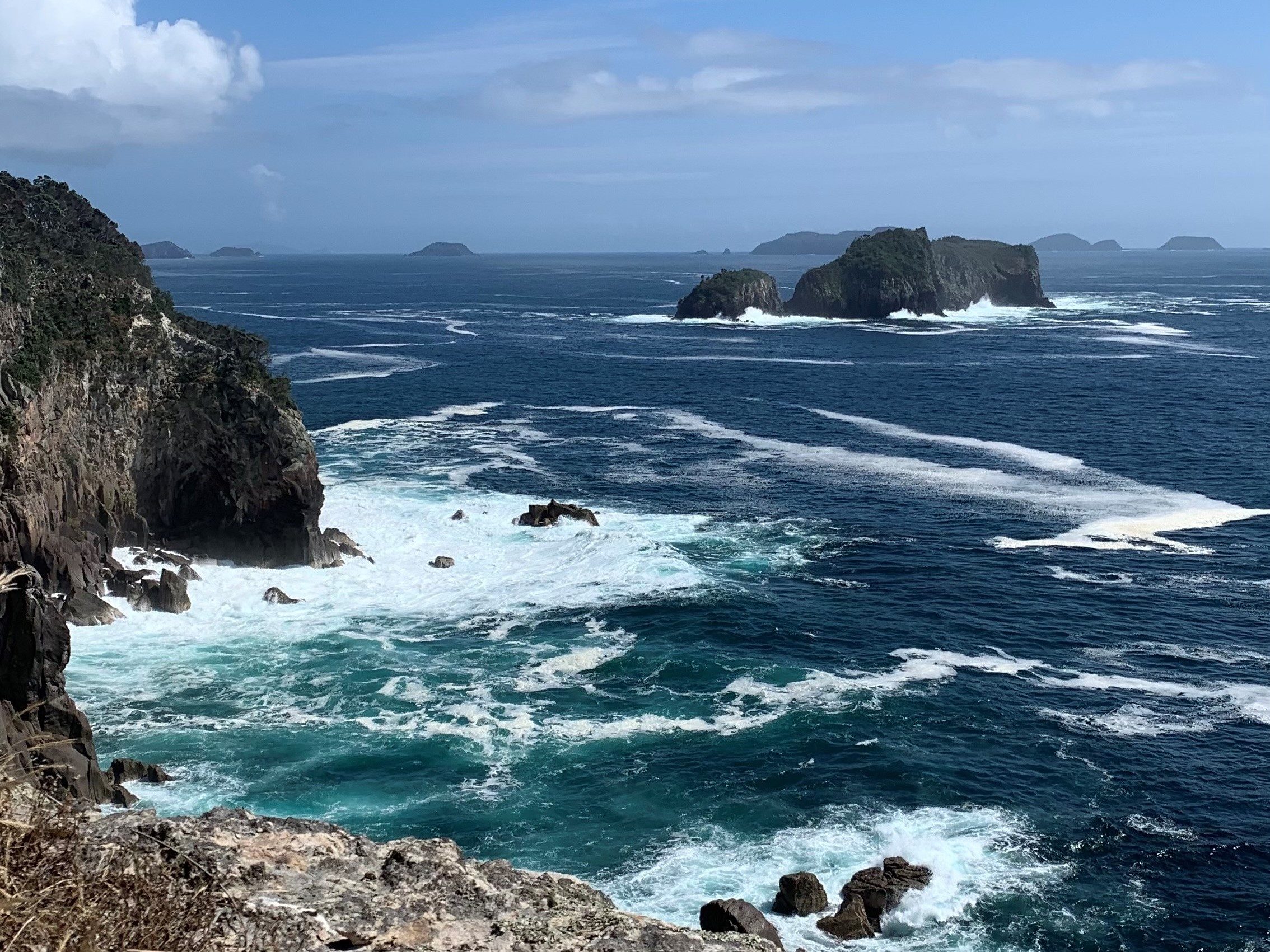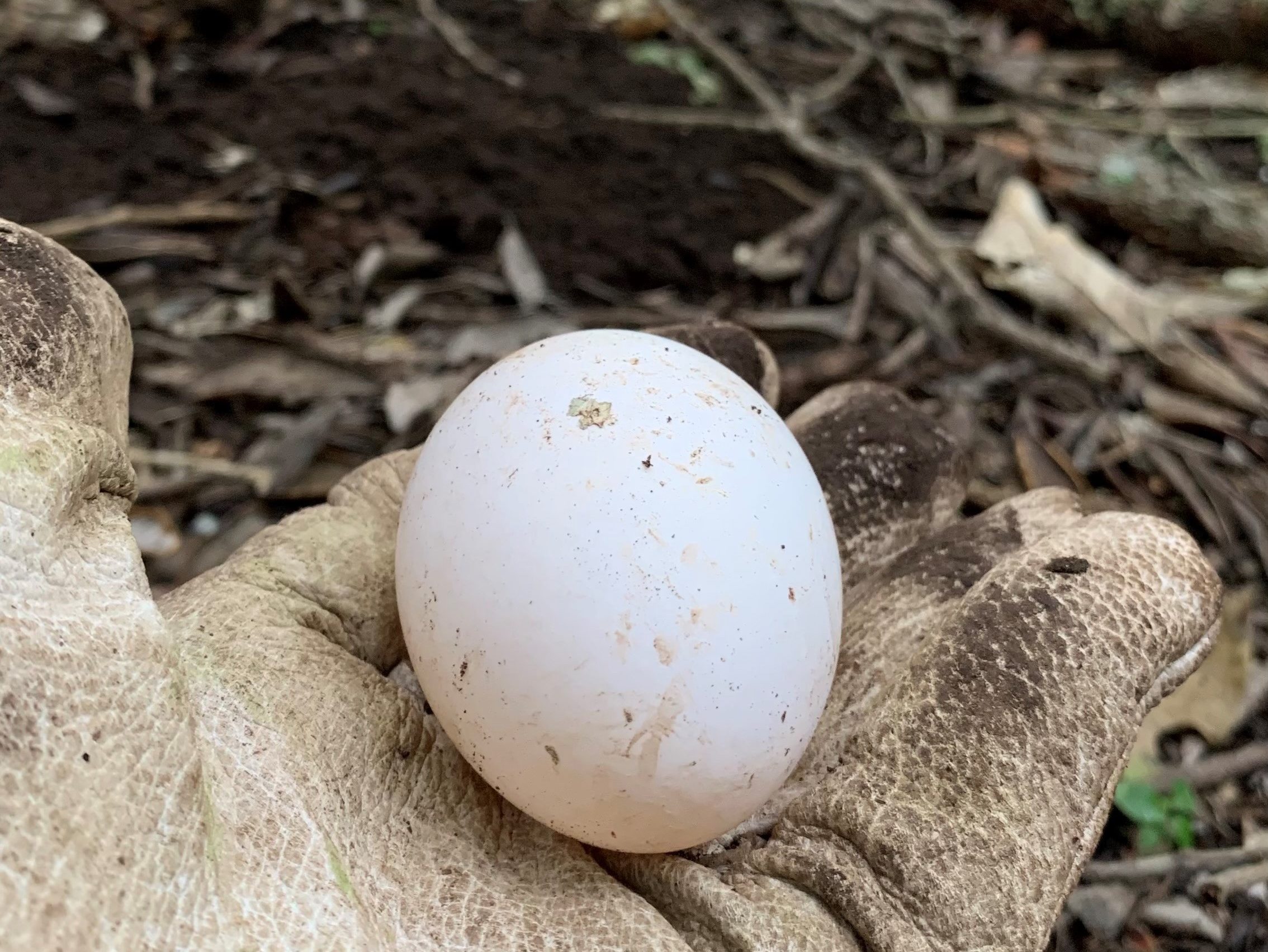On Ohinau Island, the transition from day to night tells the toanui (flesh-footed shearwaters) foraging on the water that it’s time to come home. To Predator Free Apprentice Simon Lamb, the vast number of seabirds swirling together look like a black tornado. Simon’s on the island monitoring the bird’s breeding success.

What’s involved in monitoring and protecting this native species? Here, Simon gives us a glimpse of his life as an apprentice ecologist.
The toanui come home to nest

On the edge of dusk shifting into night, I sit with my colleague Dan Burgin as we overlook a rocky sheer cliff on an uninhabited island. Soaring up the cliff, a dark silhouette flashes past our eyes. The shape is so fast and so close that we can feel and hear the rush of the wind as it glides effortlessly past us.
This fast-moving shape is a flesh-footed shearwater. These medium-sized seabirds have journeyed thousands of kilometres across the open oceans to the shores of Ohinau Island, which lies approximately 4 km off the Coromandel Peninsula
Here, the birds will pair up to settle into their underground burrows and begin the breeding season once again.
Monitoring a beautiful bird in decline

As an apprentice working for Wildlife Management International (WMIL), my job is to obtain an estimate of this year’s flesh-footed shearwater breeding success. We do this by monitoring a network of over 300 marked study burrows spread across the island.
For over 20 days during the month of December, we check each study burrow until we establish which pairs are occupying which burrow – and whether or not they’re breeding.
Ohinau Island is home to an estimated 4,000 flesh-footed shearwater breeding pairs during the summer breeding season. Flesh-footed shearwater pairs form strong bonds to one another and to their burrows, and these bonds can last a lifetime. The breeding season is a long, resource intensive time in their lives, with pairs producing only one chick per year.
Both the male and female take turns incubating their single egg, which can take over 50 days before hatching. One parent stays inside the burrow until the other returns from foraging, often leaving for several days at a time.
A hands-on approach identifying each bird
So how do we know who’s who – and how do we get them out of their underground abodes?
Flesh-footed shearwaters dig intricate burrows, usually with multiple entrances. If the nesting chamber is too far back from the entrance, we may need to construct a hatch near the nesting chamber to get into it.
Once we’ve found the bird, the easiest way to retrieve it is to stick your hand (while wearing thick gloves!) into the burrow and let its powerful bill latch onto one of your fingers. It’s as painful as it sounds.
Once the bird has gotten hold of a finger, your other fingers can grasp either side of the bill. Then, you’ll be able to slowly walk the bird out. Since WMIL established the burrow network in 2016, ecologists have banded every flesh-footed shearwater they’ve encountered.
The leg bands are small metal rings with a unique serial number. Any newly encountered birds are also banded and incorporated into the study.
From these pieces of data, we’re able to construct an intricate understanding of the breeding season.
To get our final breeding estimate, we return to the island at the end of April and band the chicks from each study burrow just before they head out to sea. This last visit is also a rewarding opportunity to see the outcome of flesh-footed shearwater’s hard work.
Looking at all toanui populations across NZ
Ohinau Island isn’t the only place in New Zealand where flesh-footed shearwaters come to breed. At the species’ northern extent in New Zealand, a colony lives on Lady Alice Island off Northland. This is another WMIL study colony, which my fellow colleagues have been monitoring.
At their southern extent, the birds also breed on Titi Island on the edge of the Cook Straight. It’s one of the only known places in the Marlborough Sounds where flesh-footed shearwaters breed.

In January 2022, Dan and I travelled to Titi Island for 10 days to estimate the number of breeding pairs living on the island. The breeding population on Titi Island is not well understood – so population estimates were due for an update.
We conducted over 100 series of 30 m transects across the entirety of the island. From our transects, we investigated each burrow that landed within 2 m of our line. To do this we used using burrowscopes – which are special instruments that have an optical camera attached on the end of a long a long flexible cable.
We checked which species were occupying each burrow and whether they were breeding. We searched a total area of 6,000 m2! The data is in the process of being analysed – and we’re hoping it tells us that the population is in good health.
The highs and lows of remote work
Living on predator free islands for a long period of time is an absolute blast, but it definitely brings its share of challenges.
We have to bring all our food and water onto the islands – and baths are provided by the sea. With our makeshift camp set up on the outskirts of the seabird colonies, the sleeping arrangements can be a noisy affair and earplugs are strongly recommended.
And yet, these challenges often seem small in comparison to working so up-close with such an incredible creature.
What’s the Predator Free Apprenticeship Programme?
The Predator Free Apprenticeship Programme kicked off in late 2020, as a result of Jobs for Nature funding from the Department of Conservation. There are currently 64 apprentices placed with a range of host organisations around New Zealand. The two-year programme gives people experience and training in predator control. It’s growing the experts of the future that will help us meet the 2050 target.

